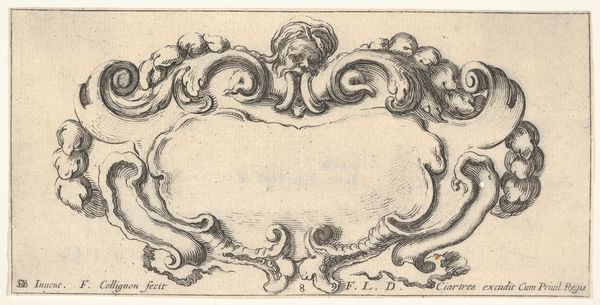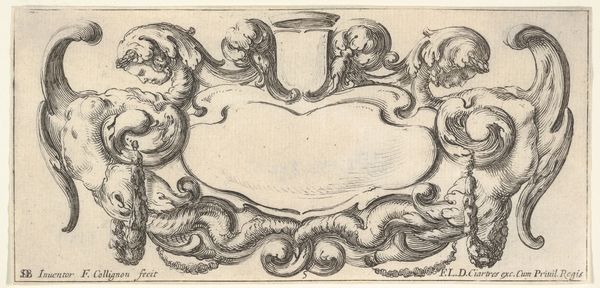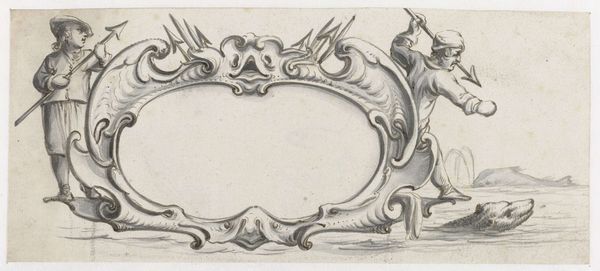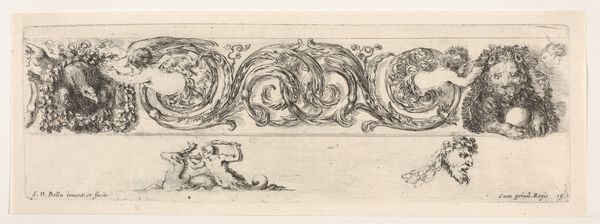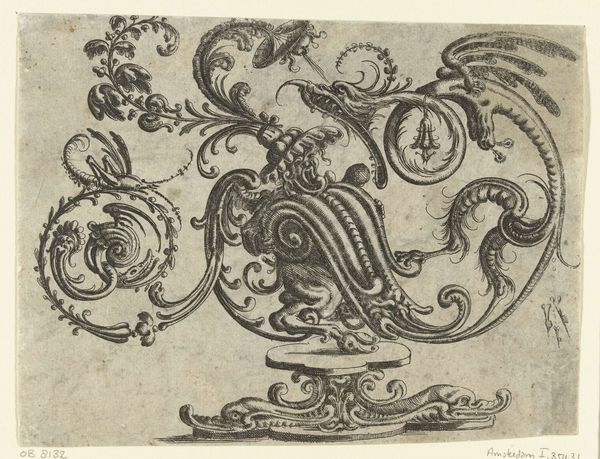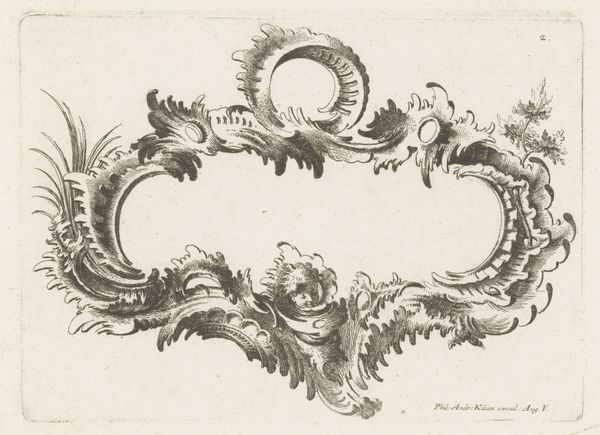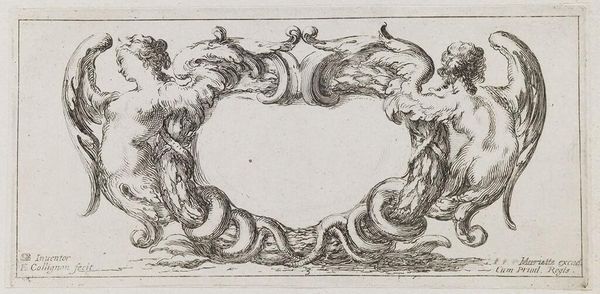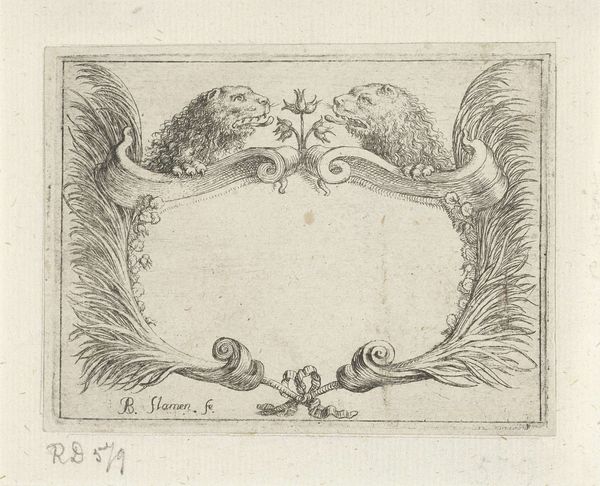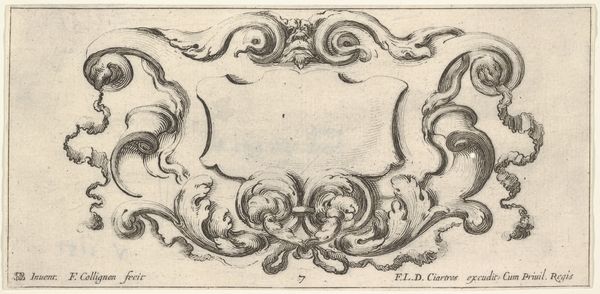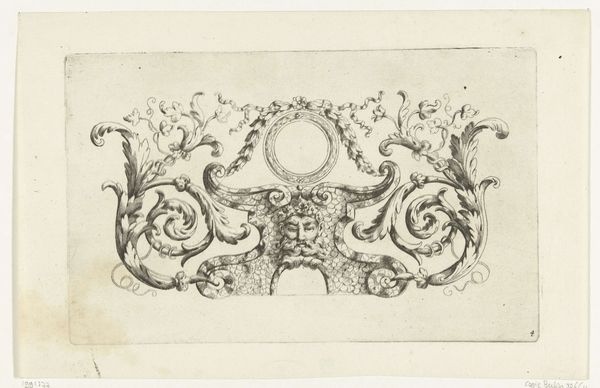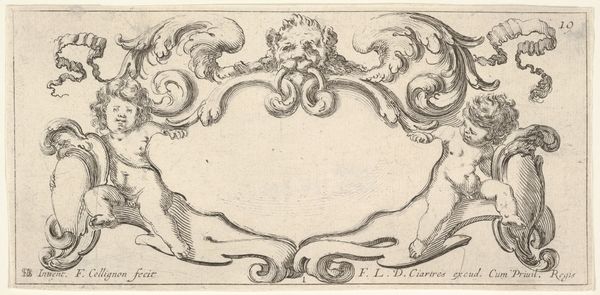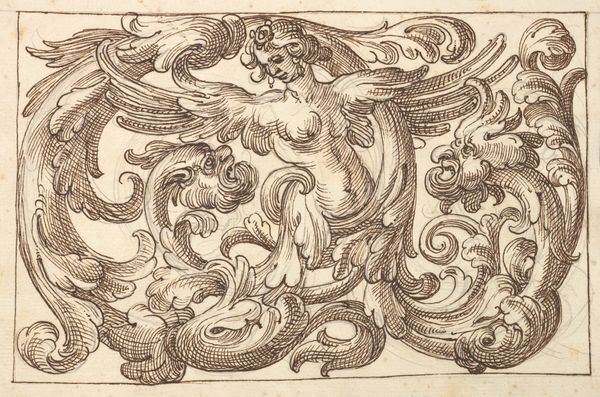
Plate 3: a cartouche with a woman with wings ending in a serpent's tail to left, seen from the front, a similar woman seen from the back to right, from 'Twelve cartouches' (Recueil de douze cartouches) 1640 - 1645
0:00
0:00
drawing, print, ink, engraving
#
drawing
#
ink drawing
#
baroque
#
pen drawing
# print
#
figuration
#
ink
#
engraving
Dimensions: Sheet (Trimmed): 3 1/8 × 6 7/8 in. (8 × 17.4 cm)
Copyright: Public Domain
This print of a cartouche was made by François Collignon in the 17th century using engraving, a process with a fascinating relationship to labor and class. Engraving involves meticulously cutting lines into a metal plate, which is then inked and printed. The fine lines and details you see here are the direct result of Collignon’s skilled hand, patiently working the metal. This was no quick task; engraving demands time, precision, and a deep understanding of materials. In Collignon’s time, prints like these were luxury items, bought and sold amongst the upper classes. Yet, the labor involved in their creation was often hidden, or at least not foregrounded. We might think of Collignon as a kind of artisan-entrepreneur, navigating the demands of the market while also showcasing his mastery of the engraver’s art. Looking at this print, consider the complex interplay of artistic skill, material properties, and social context. It’s a reminder that even seemingly decorative objects carry within them stories of labor, commerce, and the enduring human drive to create.
Comments
No comments
Be the first to comment and join the conversation on the ultimate creative platform.
